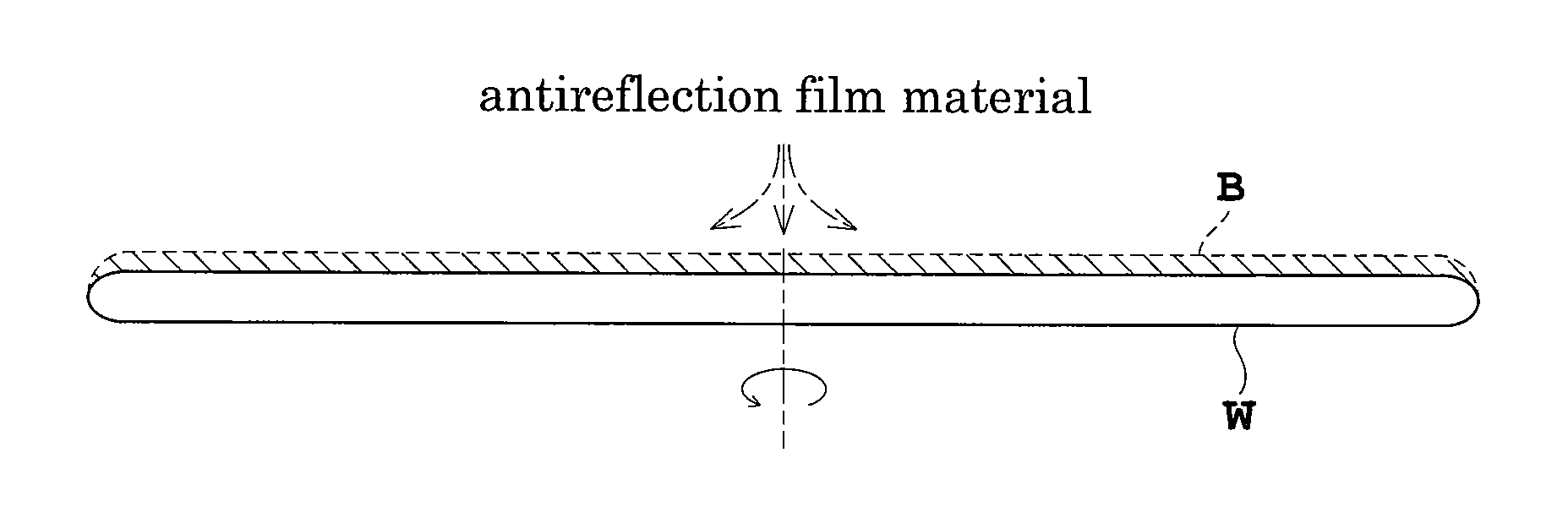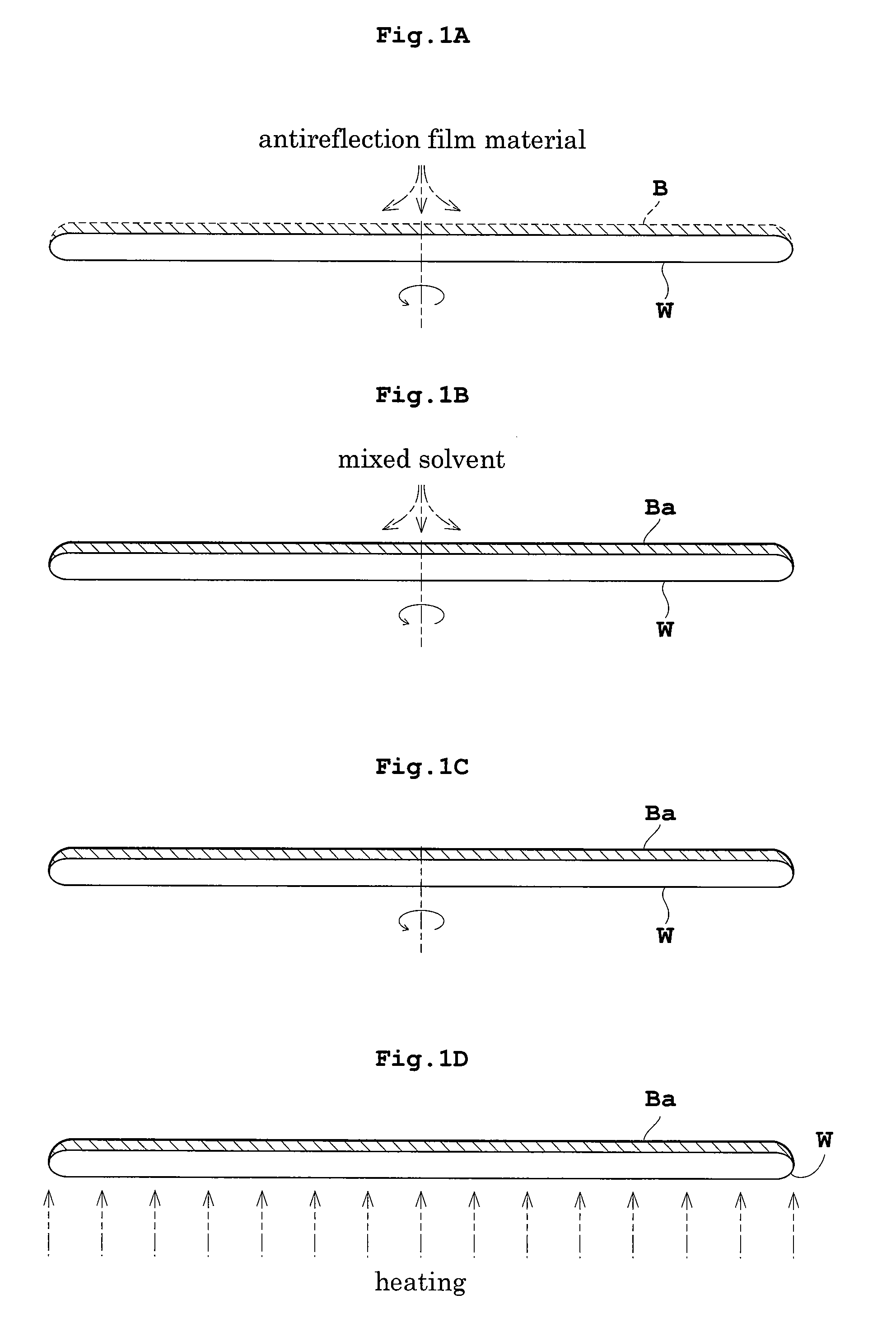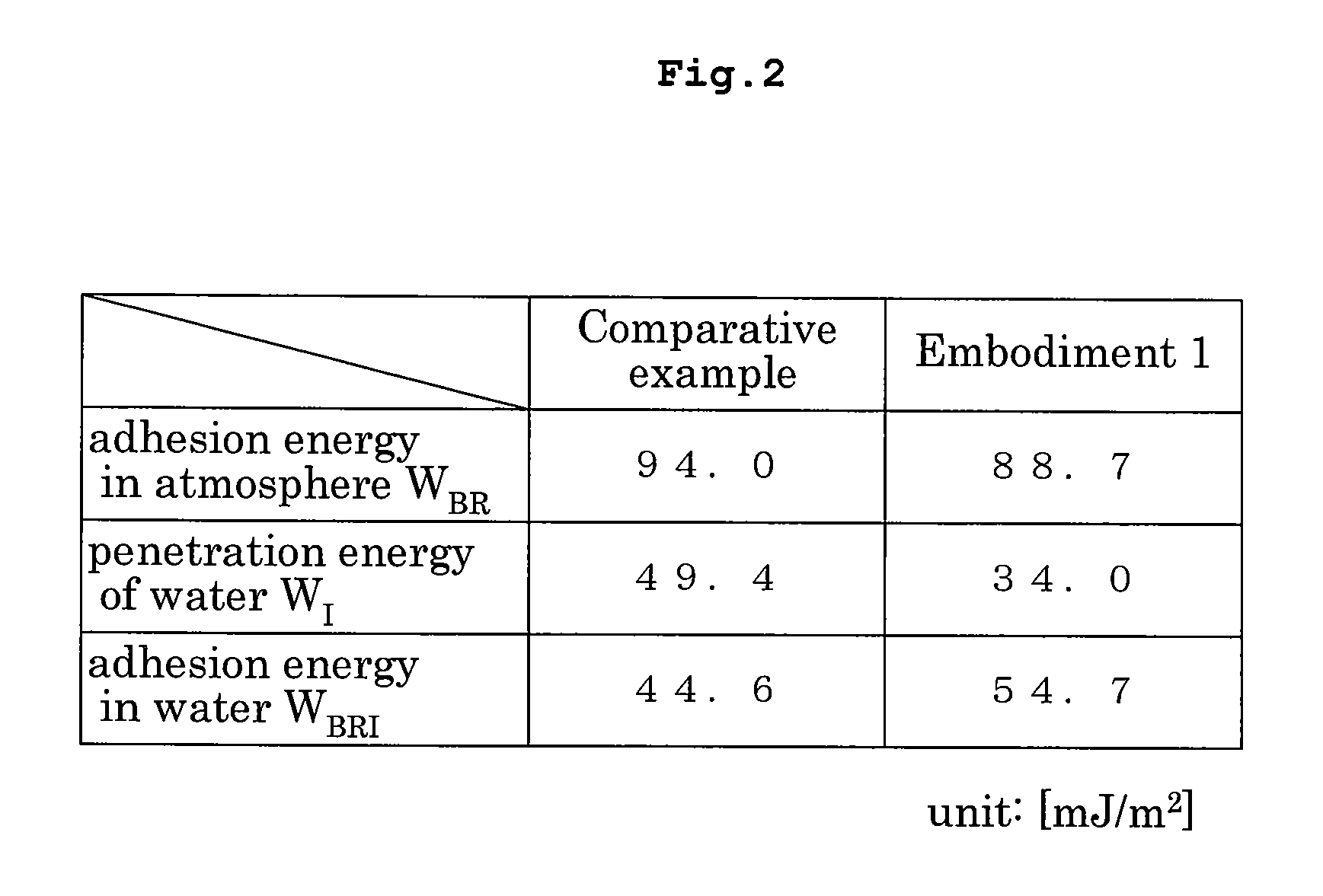Antireflection film forming method, and substrate treating apparatus
a technology of antireflection film and substrate, applied in the field of antireflection film forming method and substrate treating apparatus, can solve the problems of pattern collapse and hamper the maintenance of certain essential characteristics and achieve the effects of increasing the adhesion energy in water, and reducing the hydrogen bonding component of surface energy of the antireflection film
- Summary
- Abstract
- Description
- Claims
- Application Information
AI Technical Summary
Benefits of technology
Problems solved by technology
Method used
Image
Examples
first embodiment
[0036] Embodiment 1 of this invention will be described hereinafter with reference to the drawings.
[0037]FIGS. 1A-1D are schematic views showing steps of treating a substrate by an antireflection film forming method in Embodiment 1.
[0038]
[0039] As shown in FIG. 1A, an organic antireflection film material is supplied to the upper surface of a wafer W under treatment while the wafer W is spun in horizontal posture (spin coating). The antireflection film material spreads over the entire surface of wafer W, forming an antireflection film B on the wafer W. Subsequently, the supply of the antireflection film material is stopped.
[0040] Then, as shown in FIG. 1B, while the spin of wafer W is continued, a mixed solvent of hexamethyldisilazane (hereinafter called simply HMDS) and xylene is supplied in a predetermined quantity to the upper surface of antireflection film B. This reduces a hydrogen bonding component of surface energy of antireflection film B. In this specification, this step ...
second embodiment
[0059] Embodiment 2 of this invention will be described hereinafter with reference to the drawings.
[0060]FIGS. 3A-3D are schematic views showing steps of treating a substrate by an antireflection film forming method in Embodiment 2. Treating steps similar to those in Embodiment 1 will be described only briefly.
[0061]
[0062] As shown in FIG. 3A, an antireflection film material is spin-coated on the wafer W under treatment.
[0063]
[0064] As shown in FIG. 3B, the wafer W is maintained in the spinning state to dry antireflection film B coating the wafer W. No surface modifying treatment is performed during the drying step.
[0065]
[0066] As shown in FIG. 3C, the wafer W is subjected to heat treatment.
[0067]
[0068] Further, as shown in FIG. 3D, the wafer W is heat-treated while supplying a gas including HMDS to the upper surface of antireflection film B coating the wafer W (which corresponds to the surface modifying treatment in this invention). As a result, the antireflection film B is mo...
third embodiment
[0076] Next, a substrate treating apparatus suited to implement above Embodiments 1 and 2 will be described with reference to the drawings. FIG. 4 is a schematic plan view of the substrate treating apparatus.
[0077] The substrate treating apparatus in Embodiment 3 is constructed for forming antireflection film and resist film on wafers W under treatment, and performing chemical treatment such as development on exposed wafers W.
[0078] The substrate treating apparatus in this embodiment includes an indexer block 1 for fetching wafers W from cassettes C each containing a plurality of wafers W in multiple stages, and depositing wafers W in the cassettes C, an antireflection film forming block 2 for forming antireflection film on the wafers W, a resist film forming block 3 for forming resist film on the wafers W, a developing block 4 for developing the wafers W, and an interface block 5 for delivering and receiving the wafers W to / from an exposing apparatus (e.g. stepper) STP which is a...
PUM
| Property | Measurement | Unit |
|---|---|---|
| surface energy | aaaaa | aaaaa |
| time | aaaaa | aaaaa |
| adhesion energy | aaaaa | aaaaa |
Abstract
Description
Claims
Application Information
 Login to View More
Login to View More - R&D
- Intellectual Property
- Life Sciences
- Materials
- Tech Scout
- Unparalleled Data Quality
- Higher Quality Content
- 60% Fewer Hallucinations
Browse by: Latest US Patents, China's latest patents, Technical Efficacy Thesaurus, Application Domain, Technology Topic, Popular Technical Reports.
© 2025 PatSnap. All rights reserved.Legal|Privacy policy|Modern Slavery Act Transparency Statement|Sitemap|About US| Contact US: help@patsnap.com



